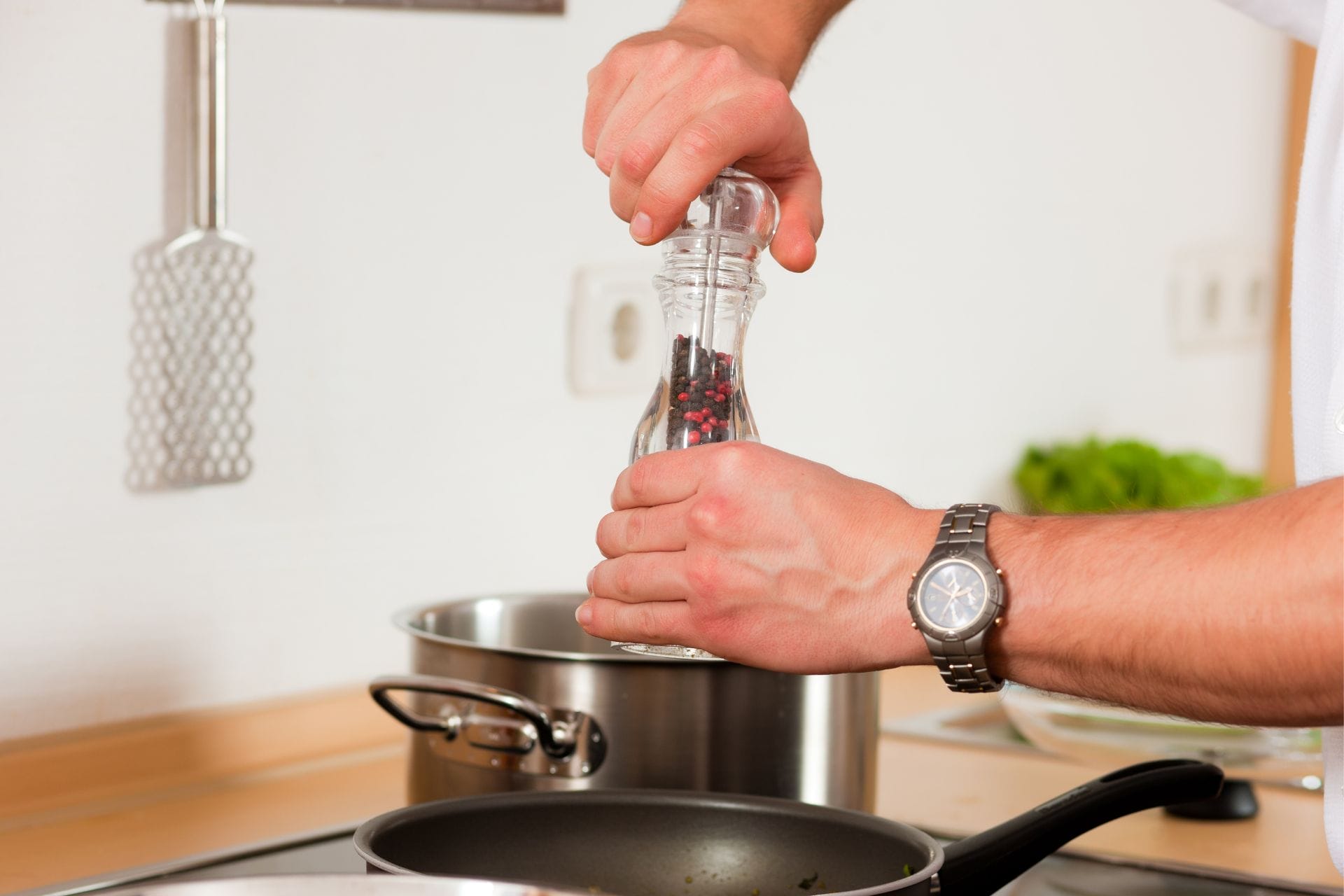Sodium and Potassium Limit for CKD

Food and your diet choices play a crucial role in managing chronic kidney disease (CKD). Every patient has unique diet requirements. However, controlling your sodium and potassium intake is key to minimizing the risk of complications.
You may not have noticed it, but sodium and potassium are present in most foods and seasonings in our kitchens. These nutrients can sneak into our bodies through the flavorings, seasonings, or condiments with which we lavish our foods.
Read on for some tips on how to reduce your sodium and potassium starting from the spices you add to your foods to your cooking methods.
Switch From Salt to Natural Flavorings

Sodium is found in virtually every food you eat, including table salt, which contains sodium chloride. Our bodies need sodium to fuel nerve and muscle functions. We also need this mineral to keep our body fluids at a balanced level.
However, too much sodium can be harmful for people with kidney disease. When your kidneys are not functioning properly, excess sodium and fluids can build up in your body. This can result in swollen ankles, a surge in blood pressure, and shortness of breath.
That’s why it’s essential to limit sodium in your diet. The first step to reducing your daily sodium intake is to minimize (or completely eliminate) salt from your diet. Dietary guidelines from the Kidney Disease Improving Global Outcomes (KDIGO) recommend CKD patients to reduce their sodium intake to less than 2,000 mg per day.
Whether you’re on dialysis or not, the National Kidney Foundation (NKF) states that limiting these high-sodium salt and salt seasonings is beneficial for your health:
Use Organic Herbs and Spices in Lieu of Salt and Seasonings
Removing salt significantly reduces the flavor in your foods. To flavor up your dishes without stocking up on sodium, use spices and herbs. Dried spices come in whole and ground forms, while herbs can be either fresh or dried.
A dash of a herb or spice is enough to perk up the flavor of any food. To seal in their flavor, store them in airtight containers and in a cool dry place.
Get rid of salt and processed seasonings and start filling your spice rack with these natural herbs and spices:
Common Grocery Items for CKD Patients
Spice type | Suggested use |
|---|---|
Bay leaf | Vegetables |
Basil | Vegetables |
Caraway | Asparagus, green beans, cabbage, cauliflower, beets, and in dips and sauces |
Curry | Carrots, green beans, and marinades |
Cardamom | Fruits and baked goods |
Dill | Cabbage, carrots, green beans, peas, and in dips |
Ginger | Cauliflower, green beans, and eggplant |
Rosemary | Cauliflower, peas, and eggplant |
Cinnamon | Fruits and baked goods |
Mint | Fruit, tea, in sauces, and as edible garnish |
Nutmeg | Vegetables and baked goods |
Thyme | Carrots, green beans, and beets |
Sage | Eggplant and in dressings |
Marjoram | Cauliflower, eggplant, and green beans |
Lemon juice | Carrots, broccoli, and cauliflower |
Tarragon | Asparagus, cabbage, cauliflower, and beets |
How do I use these herbs and spices?
Here are some shopping and cooking tips:
IMPORTANT NOTE: Dried and fresh herbs contain potassium, with dried herbs having concentrated amounts of the nutrient. The U.S. Department of Agriculture says that 1 tablespoon of dried basil has 26 mg of potassium per gram, while a tablespoon of fresh basil has only 3 mg per gram. You may also have to skip salt substitutes and flavor enhancers as they contain some form of potassium.
Too much potassium can cause irregular heartbeats which, in serious cases, can lead to heart attack. Make sure to control your use of herbs and spices. Work with your dietitian in determining your daily potassium limit and stick to it.
The list above doesn’t cover all the herbs and spices that are easy on your kidneys. You can explore new flavors as you please. But always consult your renal dietitian first before spices and herbs.
Next is to discover some cooking techniques that can make your food gentler on your renal health.
Explore Cooking Methods that Reduce Potassium
Did you know that the way you cook some vegetables and legumes can affect their potassium content? Read on to learn which cooking methods have this effect.
1. Double boiling (or leaching) - You can remove huge amounts of potassium from potatoes and sweet potatoes by boiling them twice. This way, you can safely eat them (in moderation) without accumulating potassium in your blood.
Here’s how to double-boil carrots, potatoes, sweet potatoes, and yams:
- Wash the vegetables under running water, then peel.
- Dice the vegetables.
- Prepare water (in room temperature) that’s twice the amount of the vegetables. Put the vegetables in the water.
- Boil the water.
- Pour out and drain the water. Replace it with room-temperature water (still twice the amount of the vegetables.
- Boil the water again. Cook the vegetables until they’re tender.
- Drain water and discard.
2. Soak and cook - Legumes like beans, peas, lentils, and peanuts are traditionally a no-no for people with kidney disease. They may be rich in fiber and vitamins, but they also contain high levels of potassium.
But according to a recent study titled Cooking Legumes: A Way for Their Inclusion in the Renal Patient Diet, soaking and cooking legumes reduces their potassium and phosphorus content, making them safer to eat for CKD patients.
- Soak legumes in a bowl of water and leave it for 12 hours (or longer).
- Drain the soaking water and rinse legumes in room-temperature water.
- Boil them in fresh water or cook them in a pressure cooker.
Bonus Tip: Keep Your Kitchen As Clean As Possible
Along with kidney-friendly food choices, proper food handling and storage is vital for people living with CKD to keep food borne illnesses at bay.
Follow these food safety tips after grocery shopping:
- Regularly clean and disinfect cooking utensils, countertops, and kitchen surfaces to prevent bacteria.
- Wash your hands before and after handling, cooking, and eating food.
- Wash fruits and vegetables under running water.
- Discard perishable foods that have been exposed to room temperature beyond 4 hours.
- When grocery shopping, make sure to choose pasteurized juice and dairy products.
- If you have leftovers, keep them in the fridge within 3 to 4 days.
- Bacteria multiply instantly in a temperature between 40 and 140°F (or 4.4 and 60°C), a range described as the danger zone. Store perishable foods inside the fridge within 2 hours after cooking it.
- Reheat food in the oven, microwave, or on the stove until the temperature approaches 165°F (or 74°C). Avoid using a slow cooker for the purpose of reheating, as the food may not get hot enough for safe consumption. A high enough temperature kills off disease-causing microorganisms.
- Don’t hesitate to throw out foods that show signs of spoilage, including:
- Mold growth
- Presence of insect
- Shrunk/wilted fruits and vegetables
- Discoloration
- Bruised skin or peeling
- Must odor
Bottomline
Kidney disease-friendly dieting isn’t exclusive to choosing which foods to eat and avoid. It also involves being conscious of every hint of flavoring in your food and how you cook your meals. Always remember to consume sodium and potassium in moderation to prevent stressing out your kidneys.
Swearing off salt doesn’t mean sacrificing flavor. Get familiar with herbs and spices. You’ll realize how a simple combination of common herbs and spices can turn an ordinary dish into a tasty and appetizing meal. Be creative and feel free to experiment!
As you discover new flavors that your kidneys and palate will love, remember to work with your renal dietitian in every step of the way.
In our next article, we will dive deeper into the science of spice and how you can properly use them in your everyday cooking. Stay tuned!
Grocery Shopping Guide for Kidney Disease Patients
http://www.stmichaelshospital.com/pdf/programs/hemodialysis/grocery-shopping-guide.pdf
Kidney-Friendly Shopping List
The 17 Best Protein Sources for Vegans and Vegetarians
https://www.healthline.com/nutrition/protein-for-vegans-vegetarians
How to Make a Healthy Grocery Shopping List
https://www.healthline.com/nutrition/healthy-grocery-list#TOC_TITLE_HDR_5
Using a Grocery List Is Associated With a Healthier Diet and Lower BMI Among Very High-Risk Adults
https://pubmed.ncbi.nlm.nih.gov/17288623/
Why Is Reading Food Labels Important?
https://www.livestrong.com/article/380166-why-is-reading-food-labels-important/
